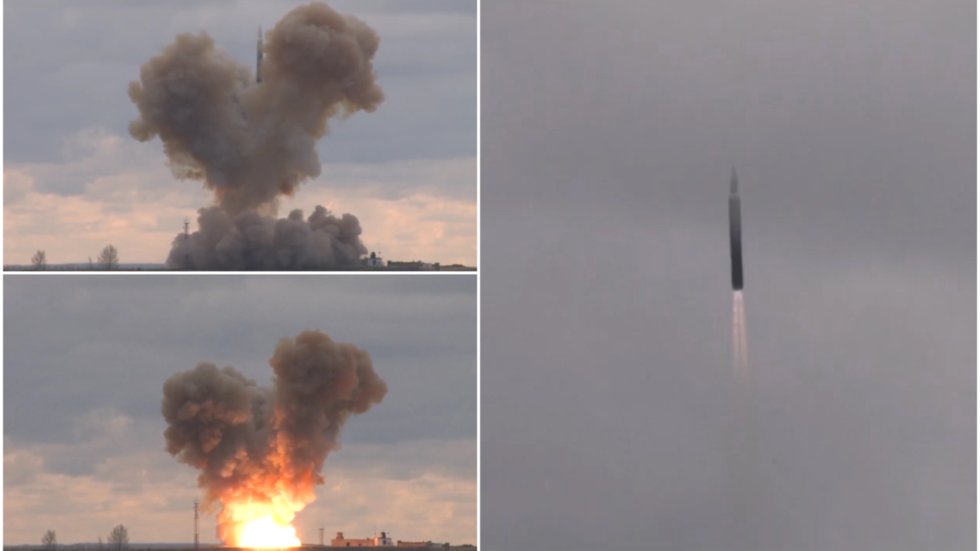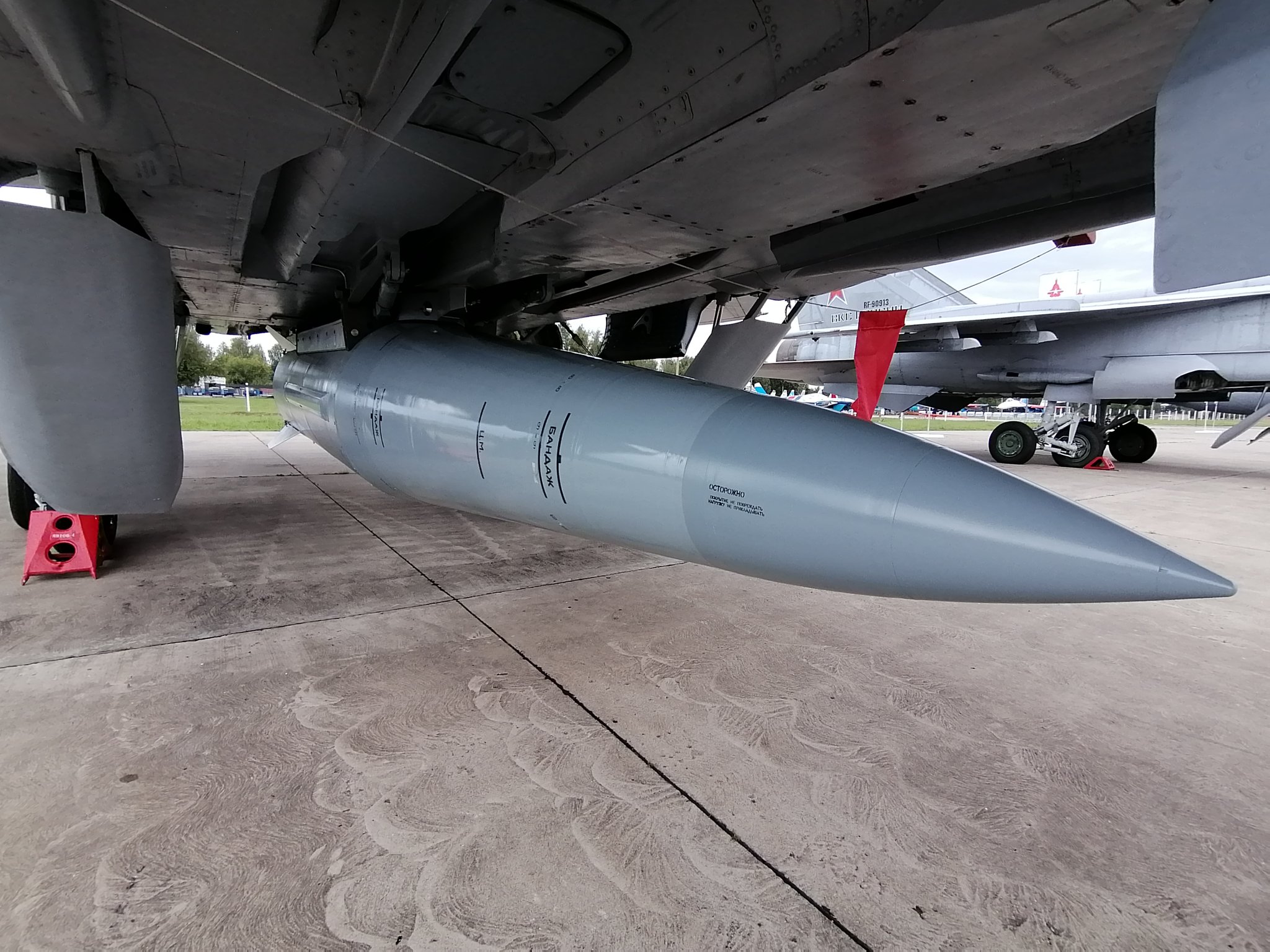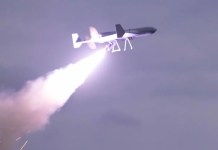The US is inching closer to the development of the Next-Generation Interceptor (NGI) that could thwart hypersonic (missile) threats from Russia and China.
Leaked Images Of ‘Russian F-35’ Stealth Fighter Jet Take Social Media By Storm: Watch
The Pentagon’s National Defense Strategy and Missile Defense Review (MDR) identifies hypersonic weapons and air missile defense as key priorities of the nation. Giving a boost to its existing missile defense system to protect itself from the evolving threats, the US is developing a Next-Generation Interceptor (NGI).
In March 2021, the Pentagon shortlisted defense firms Lockheed Martin and Northrop Grumman to build an NGI and approved initial funding of $1.6 billion for research and development.
Initially, North Korea and Iran which Washington calls “rogue nations” were identified as major threats.
However, the 2019 MDR notes that the missile defense system would defend “to the extent feasible, against a ballistic missile attack upon the US homeland from any source,” indirectly referring to the threats posed by Russia and China as well.
Can US’ Money-Power ‘Tame’ Chinese Man-Power As China Emerging As World’s Largest Military Force
What Is Next-Generation Interceptor (NGI)?
Lockheed Martin describes the NGI as the “modern, never-fail weapon system” that will be able to target and destroy multiple threats originating from a single missile, rather than relying on multiple interceptors to target each object.

The NGI will incorporate 21st-century innovations such as multiple kill vehicle technology, digital engineering, DevSecOps (development, security and operations), and modular architectures, as per the website.
The NGI is slated to replace the existing ground-based interceptors to provide the first layer of defense against intercontinental ballistic missiles or ICBMs. It will protect the continental United States as well as Alaska and Hawaii.
Northrop Grumman has partnered with Raytheon Group that specializes in sensor, seeker, and kill vehicle technology.
The US’ earlier attempts to replace the exoatmospheric kill vehicle (EKV) with the Redesigned Kill Vehicle (RKV) proved futile when the RKV plan was canceled in 2019 due to engineering flaws.
Existing Missile Defense System
The US’s current ‘layered’ missile defense system is capable of targeting both ballistic and cruise missiles. The first layer is provided by the Ground-Based Midcourse Defense (GMD), a Bush-era system set up in Alaska and California and is capable of addressing intercontinental-range ballistic missile threats.
Further, the MDA is integrating the Aegis Ballistic Missile Defense (ABMD) and SM-3 Block IIA, designed for medium-range ballistic missiles (MRBM) and ICBMs, along with Terminal High Altitude Area Defense (THAAD) to form the second layer of defense.

In the fiscal year 2021, MDA has requested $9.187 billion to support this program.
According to Lockheed Martin, a layered approach comprising the NGI, Aegis BMD and THAAD could be available in the mid to late-2020s, to strengthen the defense against a rogue state missile attack.
Lockheed’s fielded system has achieved 11 intercepts in 19 test attempts since 1999 but the company states that the current interceptor has reached a “tipping point” where it can no longer be simply updated to meet the demand.
Ankit Panda, a senior fellow at Carnegie Endowment for International Peace at a Senate Testimony in a Subcommittee on Strategic Forces, highlighted that Beijing’s efforts to develop hypersonic and directed energy weapons were, among other rationales, driven by a Chinese interest in enabling the “defeat of missile defense systems”, particularly that of US.
Russian ASF MiG-31 aircraft crew conducted combat training launch of a hypersonic missile of #Kinzhal high-precision aviation missile system in the assigned area. Launch was conducted normally. The missile hit the target at a training ground. pic.twitter.com/u8jkUw27O9
— Минобороны России (@mod_russia) March 10, 2018
Thus, the NGI is more than a technological upgrade and has become a necessity for the US to maintain a sustained deterrence against the Chinese and Russian missiles.
Russian & Chinese Hypersonic Weapons
Several experts around the world suggest that both Russia and China are ahead of the US in the race to build hypersonic weapons.
Russia’s SS-19 Mod 4 Avangard, one of six systems capable of evading missile defenses, incorporates a hypersonic glide vehicle payload. The Russian military claims Avangard moves at a speed of Mach 20 or 20 times the speed of sound.

Last month, Russia conducted a military exercise with a pair of MiG-31K fighter jets equipped with Kinzhal hypersonic missiles over the Mediterranean Sea. According to the Russian military, the Kinzhal (meaning dagger) has 10 times the speed of sound, having a range of up to 2,000km.
Russia’s 3K22 Tsirkon, also called Zircon, is another hypersonic cruise missile with sea and ground-based variants. The Russian Navy successfully test-fired the hypersonic Zircon cruise missile, capable of achieving speeds of Mach 8, to mark President Vladimir’s birthday on October 7 last year.
Explaining Zircon’s capabilities, a military expert wrote, “The missile flies with an advanced fuel that the Russians say gives it a range of up to 1,000 kilometers. And it’s so fast that the air pressure in front of the weapon forms a plasma cloud as it moves, absorbing radio waves and making it practically invisible to active radar systems.”

China is also developing hypersonic boost-glide systems. It recently unveiled a rocket-boosted hypersonic glide vehicle (HGV), the Dongfeng-17, at a military parade.
Earlier in 2018, China successfully tested the Starry Sky-2 hypersonic vehicle, during which it flew for over 400 seconds and conducted extreme-angle maneuvers at speeds above Mach 5.5.
US Is Slowly Catching Up
In June, the US conducted a successful live-fire hypersonic strike system to support US Navy’s Conventional Prompt Strike (CPS) and US Army’s Long Range Hypersonic Weapon (LRHW) programs.
CPS is a hypersonic boost-glide missile and weapon system that enables long-range flight with high survivability against enemy defenses.
We're partnering with the @usairforce to deliver hypersonic strike capabilities with the Air-Launched Rapid Response Weapon program.
Read about the latest advancements in recent ground testing below.
— Lockheed Martin (@LockheedMartin) July 8, 2021
On July 9, the US Air Force successfully detonated an AGM-183A Air-Launched Rapid Response Weapon warhead for the first time. Designed by Lockheed Martin, the system will provide rapid response and strike capabilities against hypersonic threats.
“It’s a race to the Moon sort of thing,” said Iain Boyd, an aerospace engineer at the University of Colorado, Boulder. “National pride is at stake.”
Read More




